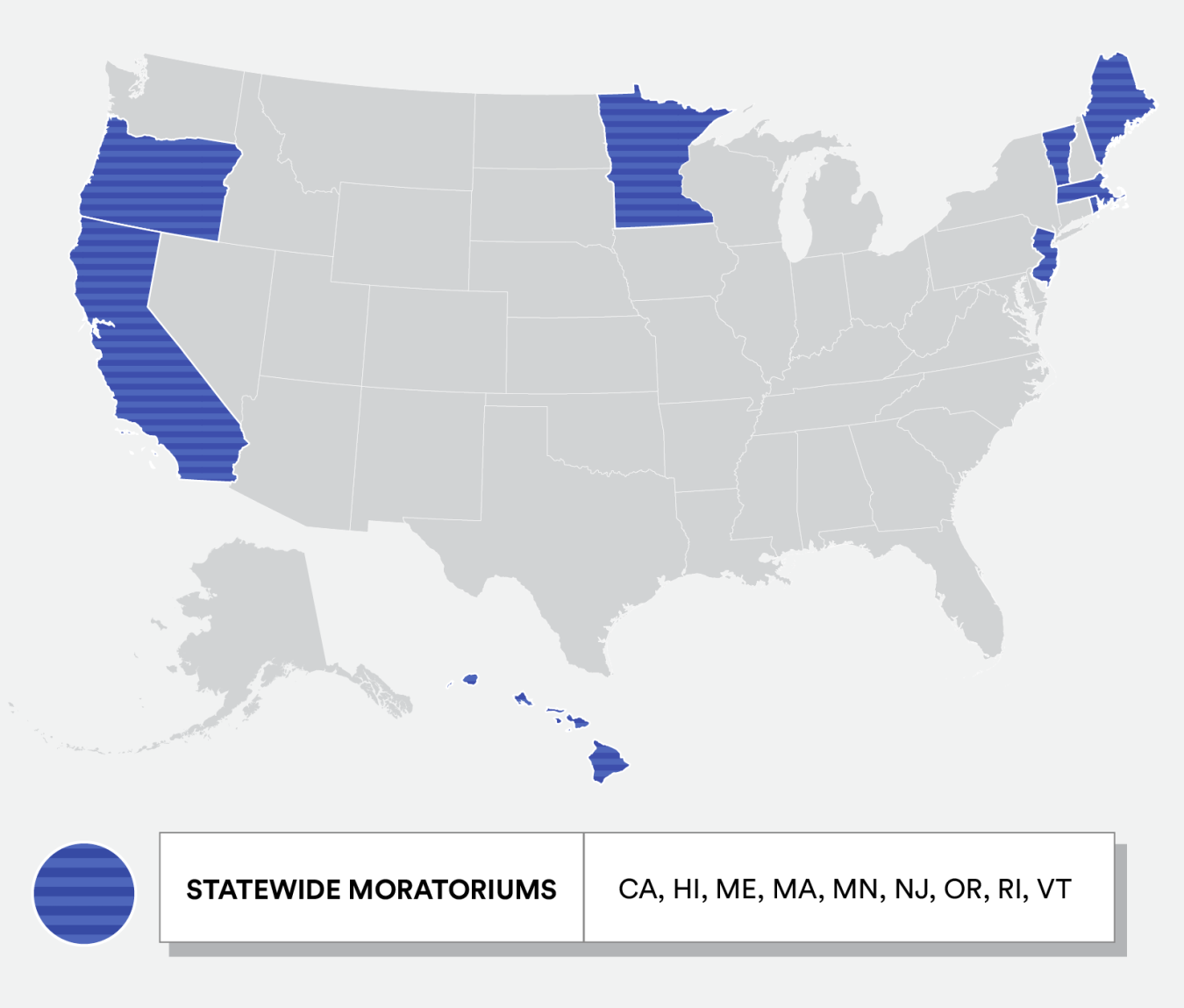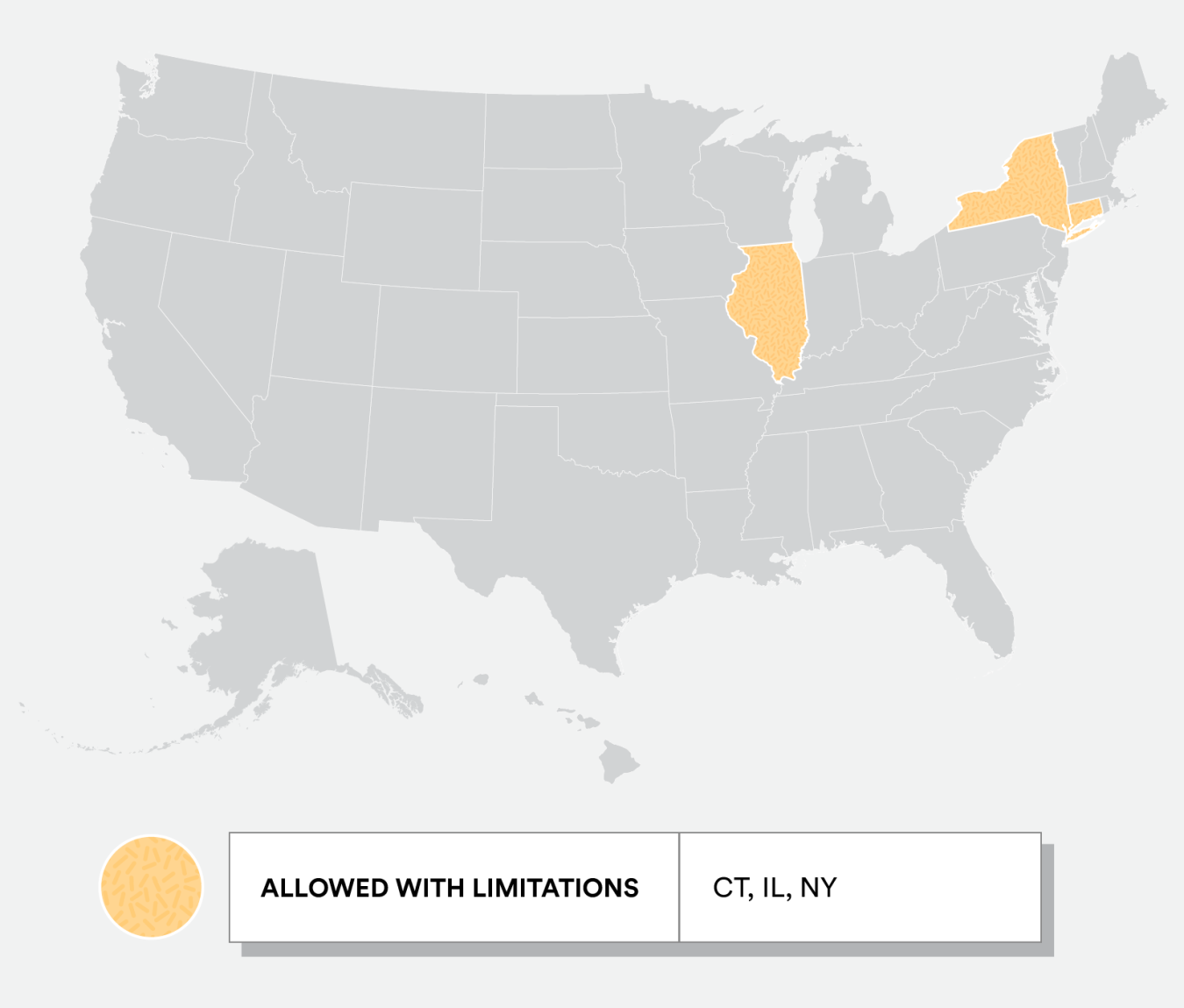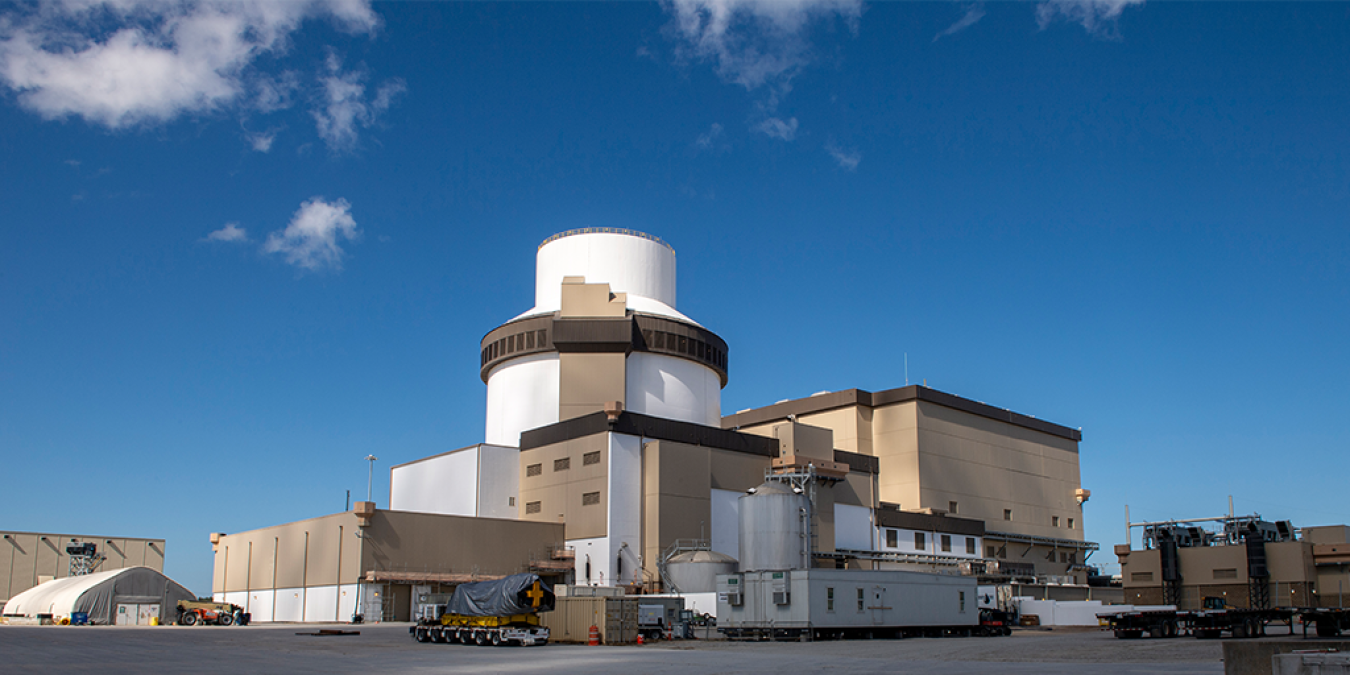Several U.S. states still have restrictions on nuclear energy development. But what are nuclear moratoriums? And which states have them?
September 20, 2024Investments through the Bipartisan Infrastructure Law and Inflation Reduction Act are prioritizing the use of current and advanced nuclear technologies to support the nation's climate goals.
The U.S. Department of Energy estimates that an additional 200 gigawatts of firm capacity will be needed to meet net-zero emissions by 2050, and the deployment of advanced reactors could help fill that void.
But several U.S. states still have restrictions on nuclear energy development called moratoriums.
So, what exactly is a moratorium? Which states have them? And which states have changed their stance on new nuclear energy?
Let’s dive in.
What Is a Nuclear Moratorium?
Simply put, a nuclear moratorium is a ban or restriction on nuclear energy. But not all moratoriums are created equal.
Some state laws prohibit the construction of new reactors or restrict the state regulatory approval of new technologies or facilities without either voter or legislative approval. Others ban nuclear energy entirely in all or part of the state.
In many states, concerns over the long-term storage of spent nuclear fuel led to restrictions until a permanent disposal solution could be found.
Which States Have Statewide Nuclear Moratoriums?
Since the 1970s, 16 states have instituted bans on nuclear energy in one form or another.
Today, statewide moratoriums remain in place in these nine states:

- California
- Hawaii
- Maine
- Massachusetts
- Minnesota
- New Jersey
- Oregon
- Rhode Island
- Vermont
Each state has its own specific set of rules and restrictions.
Minnesota, for example, has banned new reactor construction outright.
Massachusetts doesn’t allow the construction of new nuclear plants unless a list of specific conditions, including statewide voter approval, is met.
Other states, like Rhode Island and Vermont, can only construct nuclear facilities after gaining legislative approval.
Many state moratoriums require that a permanent disposal site for spent fuel is created before any new development is considered.
Which States Repealed Nuclear Moratoriums?
These four states have completely removed their bans on nuclear in recent years:

- Wisconsin (2016)
- Kentucky (2017)
- Montana (2021)
- West Virginia (2022)
Wisconsin became the first state to repeal its moratorium in 2016, lifting restrictions that had prohibited new nuclear energy development for more than three decades.
Kentucky, Montana, and West Virginia also enacted legislation that opens the door to potential new reactor construction.
Governors and state lawmakers have cited the climate and economic benefits of nuclear in the effort to overturn their states’ longstanding prohibitions on reactor construction.
Some states are looking to new reactor technologies as they consider how to transition from fossil fuels and retain jobs and economic vitality around retiring plants.
Limitations on Size & Location
New York, Connecticut, and Illinois all have unique situations where some nuclear construction is allowed, with significant caveats.

New York has no statewide restrictions on new reactor development — only a narrow moratorium in the service territory of the Long Island Lighting Company — Nassau, Suffolk, and parts of Queens counties.
Connecticut, on the other hand, currently prohibits reactor construction everywhere except the state’s one operating nuclear power plant, an exemption that was created in 2022.
In 2023, Illinois passed legislation rolling back its statewide moratorium on nuclear energy development. However, the new law limits any new reactors built to 300 megawatts or less.

Plant Vogtle Unit 4.
On the Horizon
DOE is supporting the deployment of several advanced reactors that could all be online in the 2030s.
The Plant Vogtle expansion project completed in 2024, making the Georgia nuclear plant the largest generator of clean power in the U.S.
Vogtle Units 3 and 4 use Westinghouse’s AP1000 technology that can shut down without operator action or external power for 72 hours and has a significantly smaller footprint than current large-scale reactors.
They are the first new reactors built in the U.S. in more than 30 years.
Through the Bipartisan Infrastructure Law, TerraPower and X-energy received a combined $2.5 billion to demonstrate their advanced reactors in Wyoming and Texas.
TerraPower’s Natrium reactor in Kemmerer, Wyoming, will provide jobs and reliable electricity generation in a community where a coal plant is closing down.
X-energy is partnering with Dow to deploy its grid-scale Xe-100 reactor at an industrial site along the Gulf Coast.
Additional designs supported by DOE’s Advanced Reactor Demonstration Program could also see deployment early next decade to further support the nation’s transition to a clean energy economy.
This article was updated September 2024.

